Coronavirus: How will transport need to change?
- Published
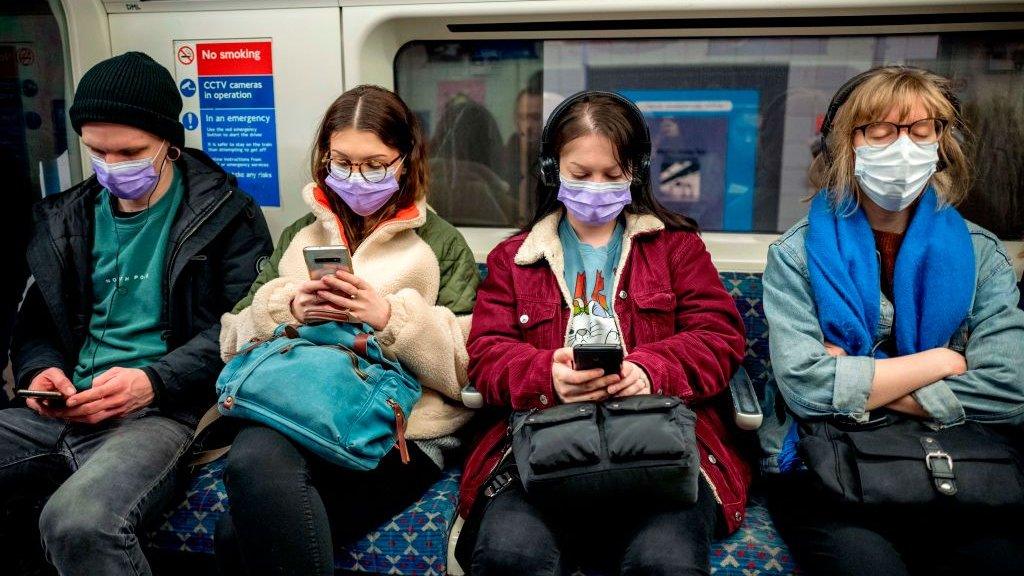
People in England who can't work from home are now being encouraged to return to their workplaces.
The government has said that passengers should cycle or walk to work where possible, but those who do take public transport should "be prepared to queue".
Is it safe to travel by train?
As more people head back to work, the government is keen that they avoid public transport unless absolutely necessary, to avoid overcrowding.
At the moment it's generally easy to maintain social distancing on trains for those who do have to make essential journeys.
About 70% of normal train services in the UK are running, but footfall through major stations is still thought to be at about 10% of pre-pandemic levels.
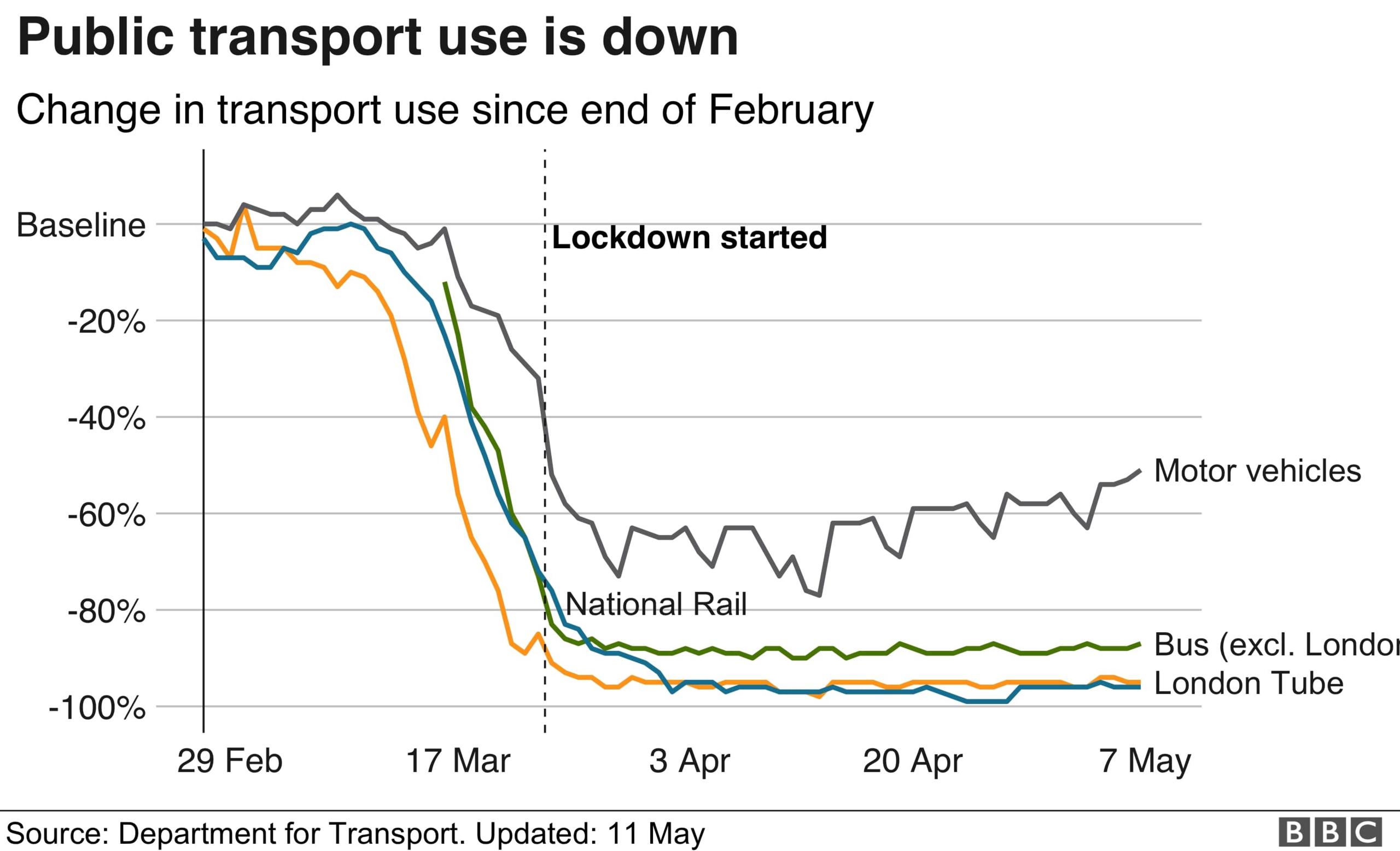
But the challenge for rail operators is how to increase the number of people allowed back on trains, while maintaining social distancing on board.
Those involved with planning say that social distancing of any kind might reduce a train's capacity by between 70% and 90%.
New crowd-control measures include preventing passengers from boarding a train or entering a platform if there are already too many people.
And more radical steps are being considered, such as passengers being required to book time slots for when they can arrive at a station.
Many inter-city trains will be reservation-only and Avanti West Coast has said it will not allow carriages to be more than a third full.
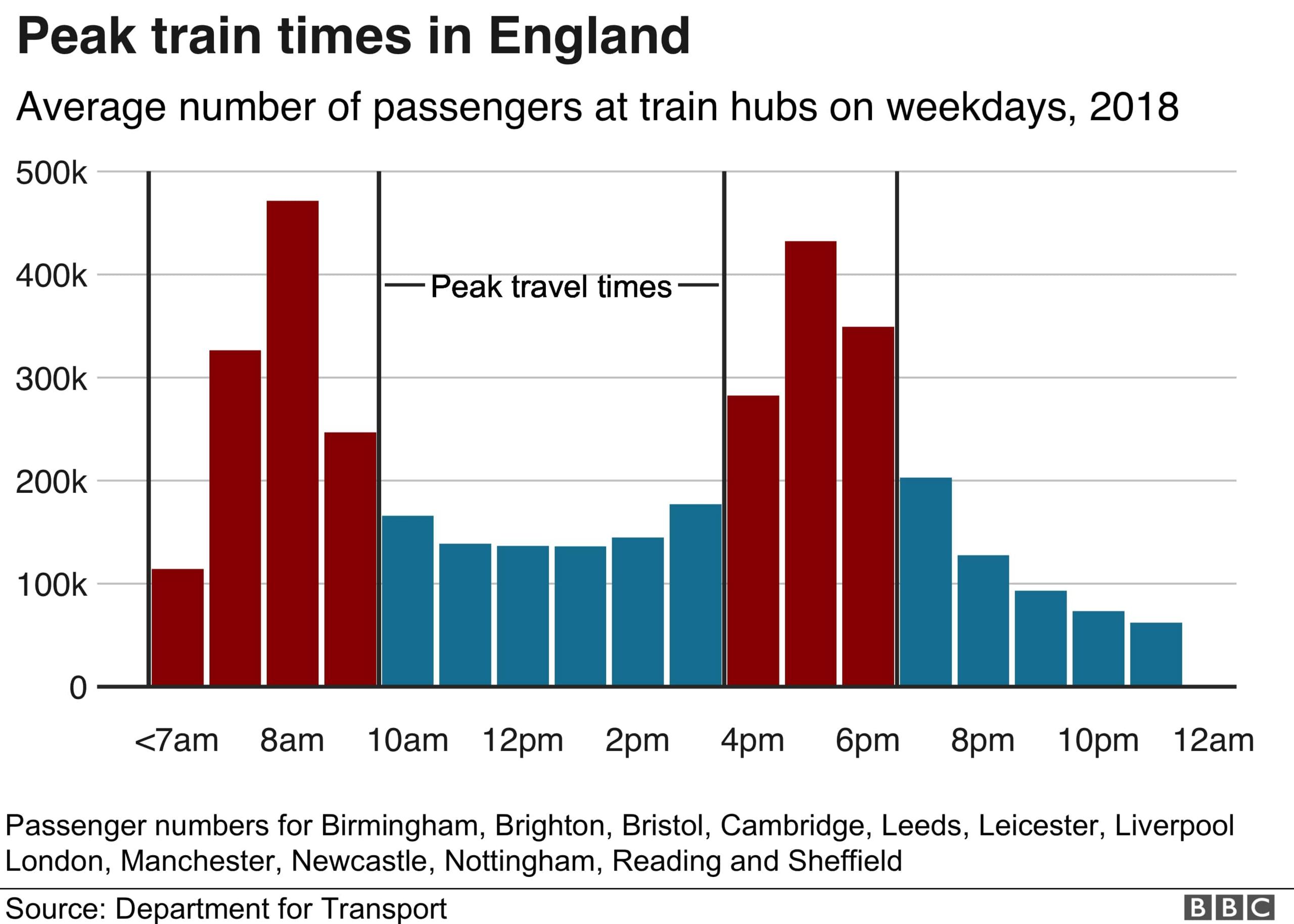
Effort has been put into reorganising stations to manage passenger flow. One-way through areas have been introduced, with clear plans for queuing in case entrances and exits are closed.
Network Rail says the rail industry is keen for passengers to wear face coverings while travelling.
However, while it might be relatively easy to limit the number of passengers on an inter-city train, it will be more difficult on commuter trains where stops are frequent and passenger turnover is high.
How will public transport in London be affected?
Time spent waiting for trains and buses is almost certain to rise.
London has a population of nearly nine million, and more than 60% of commuters in the city use public transport, compared with 7% in the UK as a whole.
A report, seen by BBC London, says that if social distancing is to be maintained on the London Underground, only 50,000 passengers could board every 15 minutes. That compares with 325,000 normally boarding every 15 minutes at the peak of rush hour before lockdown.
Transport for London (TfL) lost 90% of its income after passenger numbers plummeted. It now has £1.6bn in emergency funding to keep Tube and bus services running until September, with a full Underground service resuming as soon as possible.
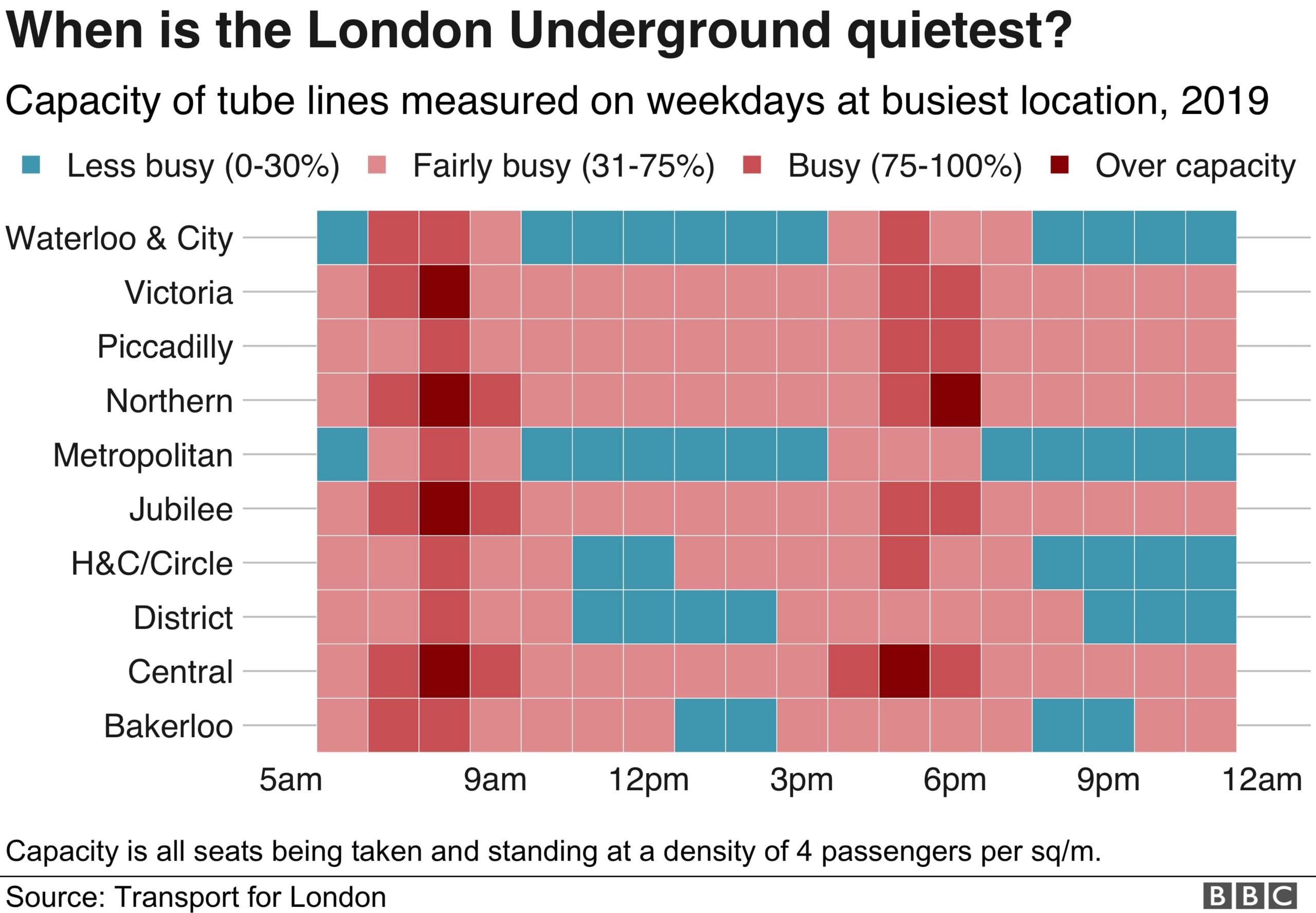
Employers are set to be asked to stagger the beginning and end of their working day in order to stop the transport system from being overwhelmed.
TfL is to introduce one-way systems, safety signs and announcements, and hand sanitiser dispensers to help people to keep to social distancing measures.
It will also regularly update guidance on the 20 busiest stations to help people to avoid those areas.
Other measures being considered to manage London's public transport system include:
Queuing systems in stations similar to those used during events such as the 2012 Olympics
One-way systems and blocked-off seats in train carriages
A booking system, where passengers need to choose the time when they want to travel
Taking a bus may also involve longer waits at the bus stop - it's thought that social distancing may mean that buses normally able to carry 85 people would be limited to 15.
Should I drive to work?
Most journeys in Great Britain are already taken in cars - in 2018 alone, the distance covered was an estimated 435 billion miles.
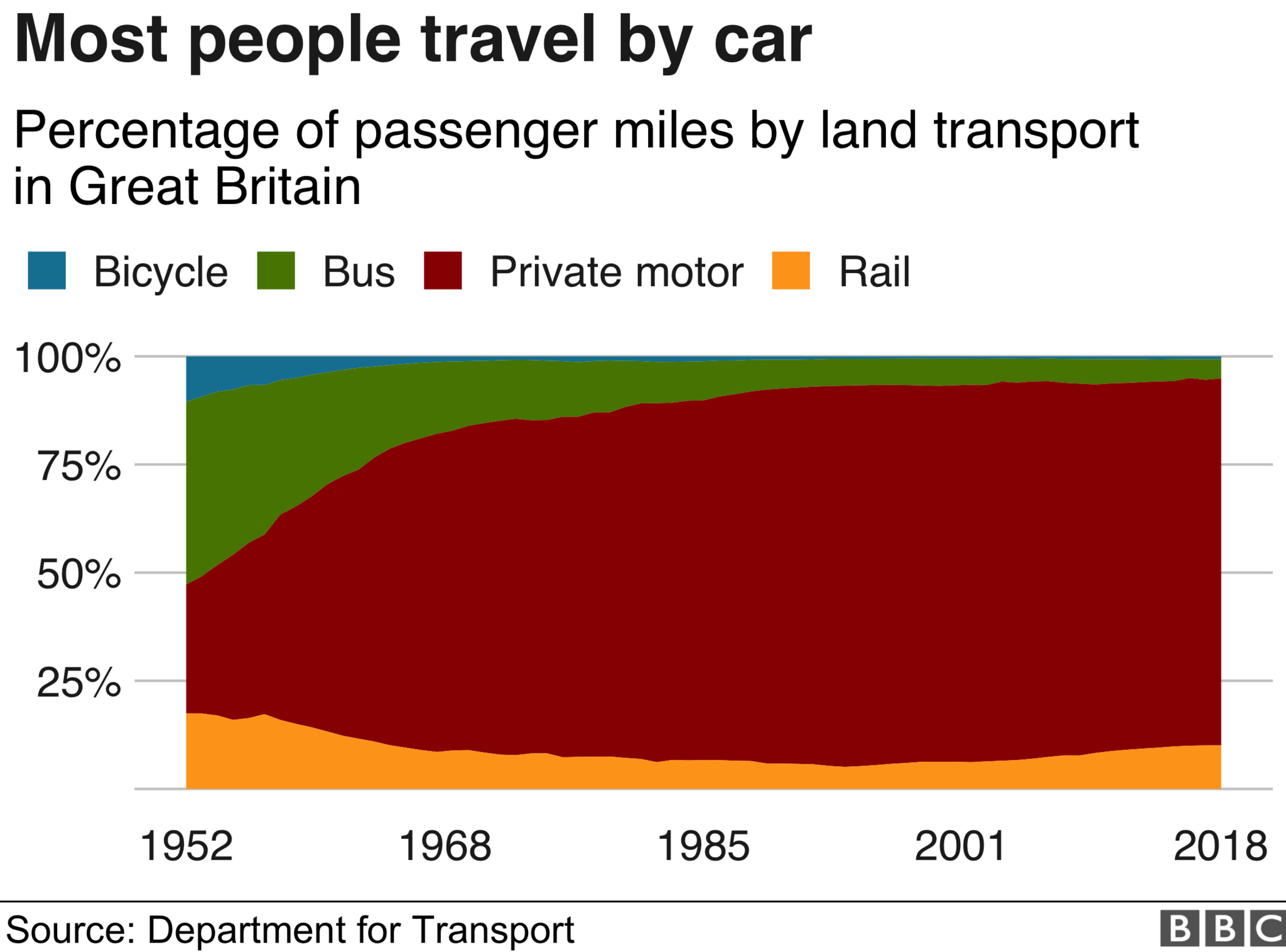
Motor vehicle use in Great Britain fell by two-thirds from March to April, particularly after lockdown was introduced on 23 March.
However, cars have remained the most-used transport and there have been week-on-week increases since the lockdown began.
Before the lockdown, most commuters were already driving to work.
The one exception is London, where the congestion charge is being reintroduced to avoid a build-up of traffic.
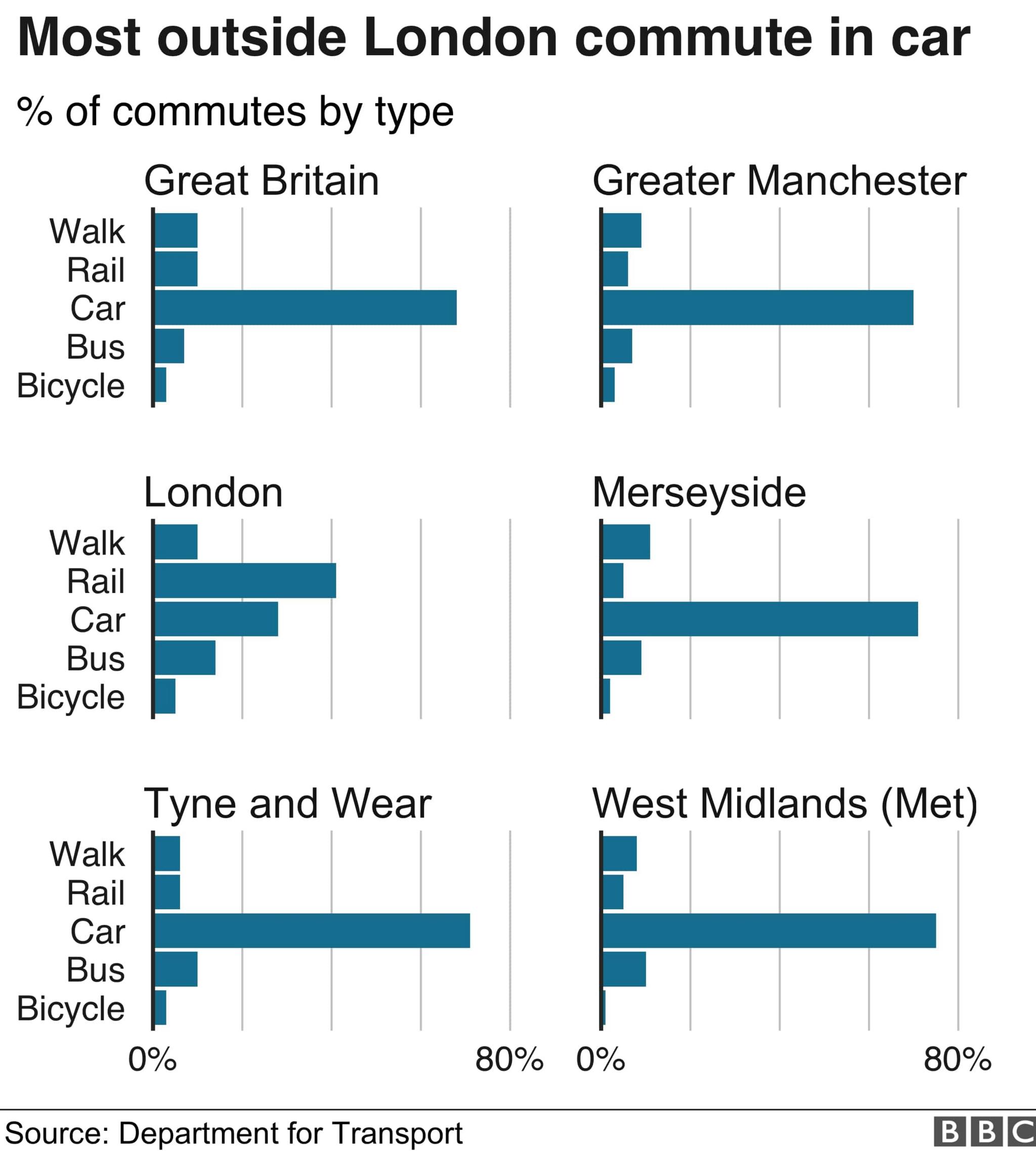
Across Great Britain, the Department of Transport (DfT) estimates 68% of people travel to work in a car, but that still means millions take public transport into their workplace.
However, government guidance recommends that individuals stop carpooling, which around 10% of commuters in cars currently do.
Will it be easy for me to cycle?
Cycle manufacturers say that sales of bikes have risen sharply during the lockdown, so this seems likely.
TfL says it's working with the Mayor of London, external to accommodate a tenfold increase in the number of people cycling, and a fivefold increase in the number of pedestrians.
An immediate £250m package of measures has been announced by the DfT, external to encourage cycling and walking in England. The measures include pop-up bike lanes with protected space for cycling, wider pavements, safer junctions, and cycle-only corridors.
And a £5m scheme has been unveiled in Greater Manchester to make the city safer for cyclists and walkers, while a major road in Brighton has been closed off to motor traffic.

However, factors including access to bikes or perceptions of road safety could slow the take-up of cycling. Well over half the people questioned by a recent DfT survey said they did not consider the roads in their area to be safe.
In 2018, the percentage of the UK population cycling to work, external ranged from 4% in England, to only 1% in Northern Ireland.